Ireland is home to some wonderful cathedrals and friaries that are steeped in history, echoing Ireland’s rich monastical past.
Ardfert Cathedral Church and Friary 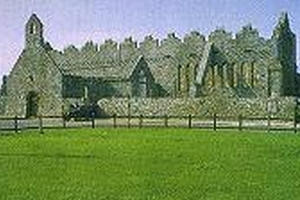
Saint Brendan, the Navigator chose Ardfert to be the site of his monastery. Today you will find three medieval churches, an ogham stone and a number of early Christian grave slabs in the site. This is a fine example of an Irish medieval church.
Dating back to the 12th century examine the cathedrals west doorway which is Romanesque in design. Developments to the cathedral were continuous which can be seen with its magnificent 13th century east window and a spectacular row of nine lancets in the south wall. Two statues were added in the late 13th to early 14th century and are of ecclesiastical figures. These are mounted on either side of the east window. The battlements were added in the 15th century.
One of the smaller churches has been carefully restored and turned into a thriving visitors centre under the care of Duchas. Why not visit here and you will learn more about Saint Brendan, his monastery and about Ardfert.
St Finbarrs Cathedral, Cork 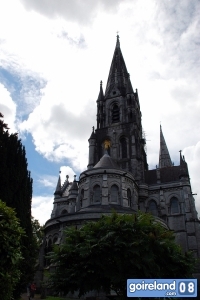
Built in 1865, the cathedral remains to be one of Corks most famed landmarks. The cathedral is based on William Burges’s French gothic style design. Burges gave the cathedral a Resurrection Angel, made of coppper and gold leaf as a gift and it is located on the pinnacle of the sanctuary. There is a local superstition which states that if ever the angel is to fall from the roof of the Cathedral, this would signify the end of the world.
The Church of Ireland (protestant) Cathedral is located in one of the cities oldest areas. It it is notable for its use of various local limestones and for the contribution of its memorable collection of spires to the skyline of the city.
Saint Marys Cathedral Tuam 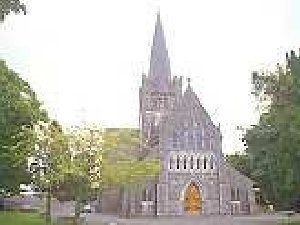
Saint Mary’s Cathedral is situated off High Street in the town of Tuam. Saint Mary’s is comprised of three cathedrals; the 12th century cathedral of which only the magnificent Romanesque chancel remains.
The unfinished 14th century cathedral which served as the diocesan Synod Hall and the 19th century Gothic Orevival Cathedral which contains a number of unusual stained glass windows.The most impressive window is that on the west end which depicts the Transfiguration of Our Lord.
S.S. Peter and Paul Pro-Cathedral Ennis 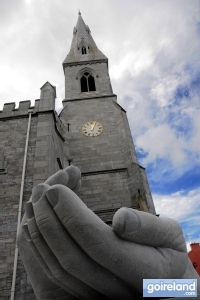
The Cathedral was erected in 1831 two years after Catholic Emancipation. It was designed in a neo-Gothic style by Dominic Madden of Galway. In 1843 the church was placed under the patronage of St. Peter and St. Paul. In 1973 the sanctuary of the church was subject to major renovations. At the end of that same year, Bishop Michael Harty was the celbrant at the formal reopening ceremony.
Galway Cathedral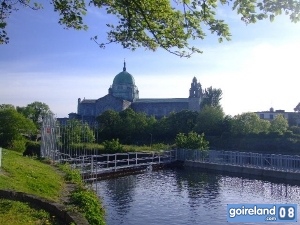
The Cathedral of Our Lady Assumed into Heaven and Saint Nicholas, dominates Galway’s skyline. It is on the site of the old Galway Gaol - featured in Lady Gregory’s ‘Gaol Gate’.
Dedicated in August 1965 by the late Cardinal Cushing of Boston, USA, the cathedral is built in cut limestone in a combination of classical and traditional design, and has Connemara Marble flooring.
Christchurch Cathedral Dublin 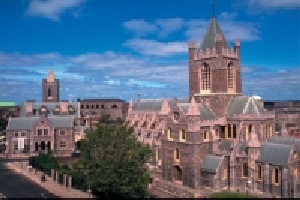
The Cathedral of Our Lady Assumed into Heaven and Saint Nicholas, dominates Galway’s skyline. It is on the site of the old Galway Gaol - featured in Lady Gregory’s ‘Gaol Gate’.
Dedicated in August 1965 by the late Cardinal Cushing of Boston, USA, the cathedral is built in cut limestone in a combination of classical and traditional design, and has Connemara Marble flooring.
Saint Patricks Cathedral Dublin 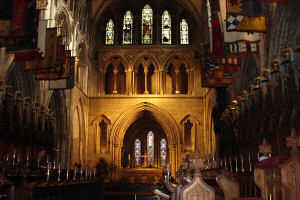
St Patrick’s Cathedral is Ireland’s largest cathedral and attracts in the region of 300,000 visitors each year. It dates back to 1191 and is the largest of the three Church of Ireland cathedrals in Dublin. Externally the cathedral is 91 metres long while the nave is 17 metres high.
Before the cathedral was built a holy was on this site. And according to legend St Patrick was baptised here. As a result a small wooden church was built here to commemorate St. Patrick in the 5th century. In 1192 it was rebuilt in stone by Archbishop John Comyn. A stone now marks the site where the holy well used to be - it’s sealed in the west end of the cathedral.
A major renovation project was undertaken in the 1870′s and as a result much of the architecture is Victorian in style. Jonathan Swift, (writer of Gulliver’s Travels) who was Dean of the cathedral from 1713 to 1745, is buried here. Also the funerals of two former Irish presidents took place here, namely Dr. Douglas Hyde and Erskine Hamilton Childers.
Saint Canices Cathedral 
Saint Canices Cathedral is one of Ireland’s finest. Completed in 1285, it occupies the site of an earlier church and contains rich carvings, worked in both timber and stone, some dating from the 13th century. It was sacked by Cromwell’s army in 1650.
The walls are made of local Kilkenny limestone with pillars of sandstone on the interior. The south transept contains the effigies of the Butler family. It has colourful stained glass too and everywhere the authentic air of a structure that has served the community for over seven hundred years. A one hundred foot round tower is open to visitors.
St Canice’s is the second longest Cathedral in Ireland - St Patricks in Dublin is the longest.
